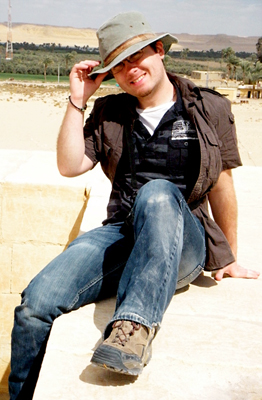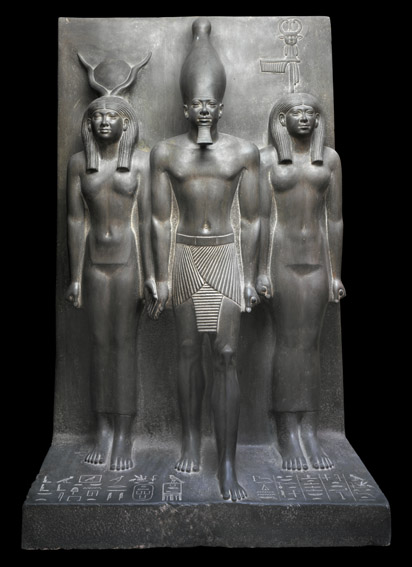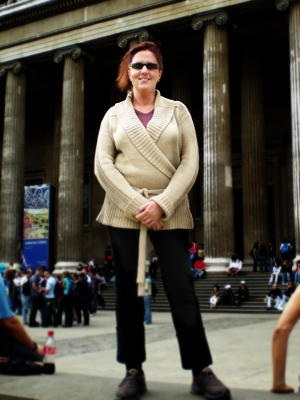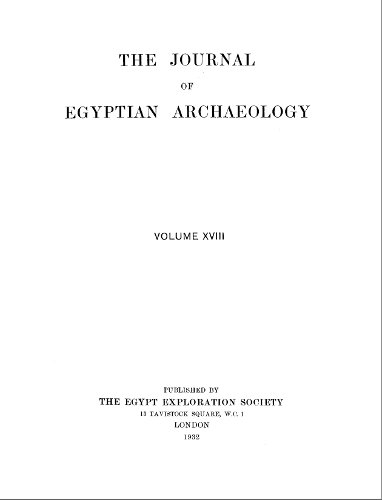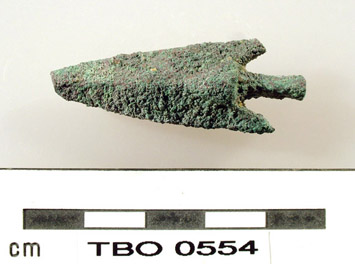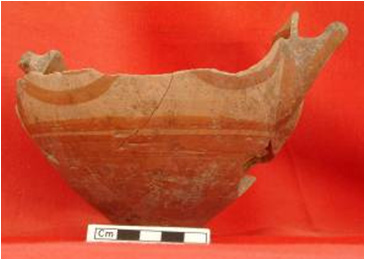Egyptologist 11 November 1942 Dr Rolf Krauss is a renowned German Egyptologist who – prior to retiring in 2007 – last worked as a researcher at the Berlin Museum of Prehistory and Early History, and as a lecturer at Humboldt University. He has produced a number of important studies into ancient Egyptian chronology and astronomy. Born in Heidelberg in 1942, Dr Krauss studied at the University of Heidelberg and the Free University of Berlin from 1975 to 1981, gaining his PhD in Egyptology from the latter institution. He went on to work at the Egyptian Museum in the National Museums…
-
-
Attribution: Photo by Maggie Bryson Garry Shaw Egyptologist and writer 7 April 1981 Dr. Shaw studied archaeology at the University of Liverpool from 1999 – 2002, and then stayed on in Liverpool to study for an MA (2002 – 2003) and PhD (2004 – 2008) in Egyptology, only taking a year off to go explore China. His main area of research has been elite life and architecture in Egypt’s New Kingdom, with the extent of the pharaoh’s personal authority in day-to-day political affairs being the subject of his first book, published in 2008. Subsequently he has written academic articles on…
-
Attribution: Heritage Key Cairo Egypt Key Dates This item is dated from the 4th Dynasty of the Old Kingdom. Key People The triad depicts King Menkaure, the last Great Pyramid builder. The 17th Nome of Upper Egypt and the goddess Hathor are pictured to the left and the right of Menkaure respectively. In the Triad of Menkaure, King Menkaure is depicted in the foreground wearing the white crown of Upper Egypt. Hathor, the goddess of music and love, is shown to the right of Menkaure, holding his hand. To the left of Menkaure is the 17th Nome of Upper Egypt.…
-
Description Zahi Hawass takes you inside the new tombs at Saqqara, the Valley of the Kings, and the temple of Taposiris Magna. See the tombs of Nefret-swt and Qar, and come along on the search for KV64 and the tomb of Cleopatra and Mark Antony! Related Heritage Experts Zahi Hawass Credits Images by Sandro Vannini & Niccolò Piazza Transcription If someone ask me a question now and say: «What is the most recent discovery that you made?» I can say: «I’m inside a tomb located west of the step pyramid, the oldest pyramid in Egypt». This tomb is under the…
-
Paula Veiga Researcher in Egyptology 13 April 1968 Paula Veiga has a background in tourism, but holds a Master in Pre Classical Studies from the University of Lisboa and a Master in Biomedical Egyptology from the Faculty of Life Sciences, University of Manchester (which covers Histology studies and laboratory practice, DNA studies and practice of extraction, Paleopathology, Osteology, amongst other disciplines). She recently published her first book – Oncology and Infectious Diseases in ancient Egypt: The Ebers Papyrus? Treatise on Tumours 857-877 and the cases found in ancient Egyptian human material and has another one upcoming. Paula Veiga is working on…
-
Professor of Egyptology at the American University in Cairo Dr Salima Ikram – one of the world’s leading authorities on Egyptian religion – recently chatted to Heritage Key on the subject of the cult of animal worship in ancient Egypt. In another exclusive new video interview, she dons her white coat and takes us to the lab, for a fascinating insight into the practice of animal mummification. Animals were deeply sacred in ancient Egypt, particularly from the 26th dynasty – around 700 BC – until the end of Egyptian civilization and the advent of Christianity by 400 AD. They were…
-
The cemetery at Saqqara is one of the most important archaeological sites in Egypt. Over six kilometres long, it boasts thousands of underground burial sites, as well as the six-step Djoser pyramid – Egypt’s oldest pyramid. The ruins at Saqqara have long attracted the interest of explorers, grave-robbers and local people. Travellers first reported evidence of antiquities at Saqqara in the 16th century. The Djoser Pyramid and the smaller pyramids around it were hard to miss – but the size of the necropolis only became apparent with the advent of excavations in the 19th century. It was not until Napoleon…
-
Alexandre Piankoff was a world-renowned anthropologist and Egyptologist, who made significant progress in the field of translating religious texts. Born in 1897 in St Petersburg, Russia, Piankoff first got a taste for history when visiting the majestic State Hermitage Museum in his home city. Enthralled by the Egyptology section in particular, Piankoff studied Foreign Languages and Egyptian Philology at university, before his academic life was cut short by the First World War. Thereafter Piankoff became a fervent academic, studying at Berlin, then the Sarbonne in 1924, then the University of Paris where he obtained a Phd. The Second World War…
-
It’s long been a common stereotype that Akhenaten was a pacifist, someone who avoided warfare when possible. If you read Heritage Key’s article on Nazi Egyptology you will see that the Nazis hate him for that precise reason. But recent research, presented this weekend at an Egyptology symposium in Toronto, shows that the Amarna leaders – including Akhenaten, King Tut and Nefertiti – all supported a sizable fortress in the Sinai desert. Located at Tell el-Borg it was a formidable bastion. It was 120 meters east-west by 80 meters north-south. The walls were four meters thick (at the base) and it…
-
Recent archaeological work at the site of Tell Tayinat in southeast Turkey, near the Syrian border, indicates that the ancient city was the centre of a Dark Age kingdom, ruled by people from the Aegean area. In an in-depth interview Professor Timothy Harrison, of the University of Toronto, told Heritage Key about this startling theory and the evidence that supports it. Around 1200 BC life changed suddenly throughout the Mediterranean world. The Mycenaean civilization in Greece and Crete, the Egyptian New Kingdom and the Hittite Empire, all collapsed at roughly the same time. It’s not until 900 BC that archaeologists…

